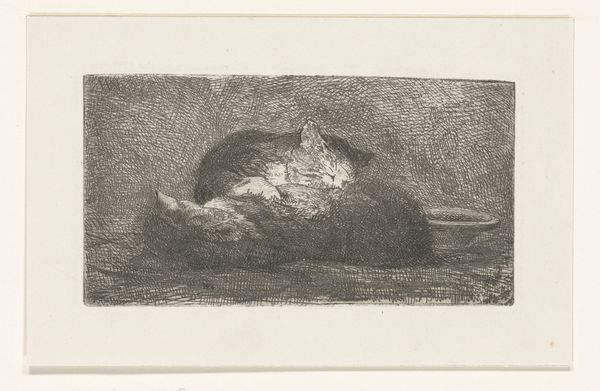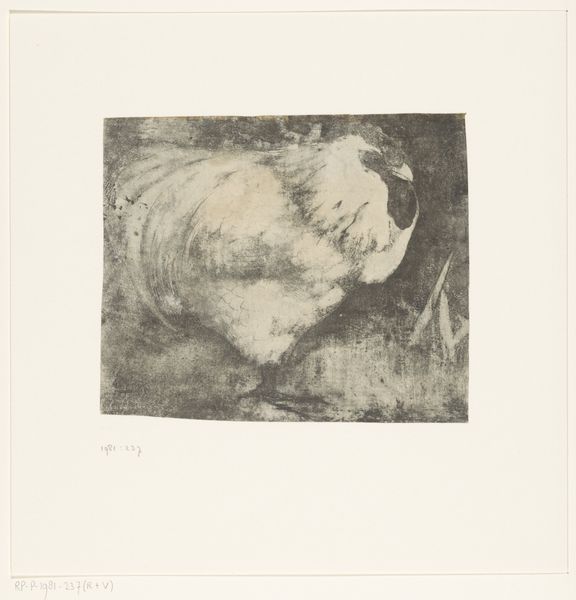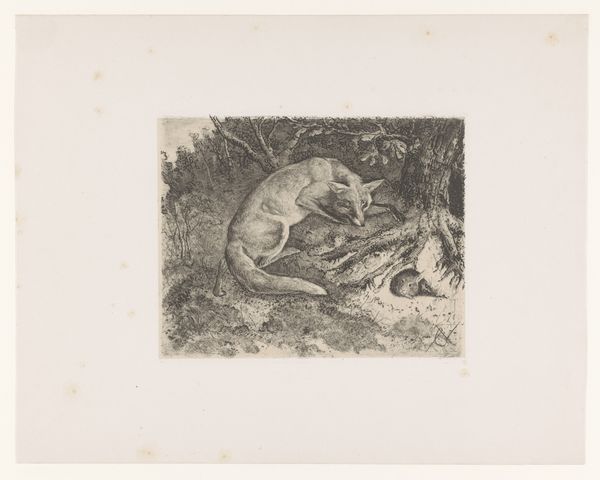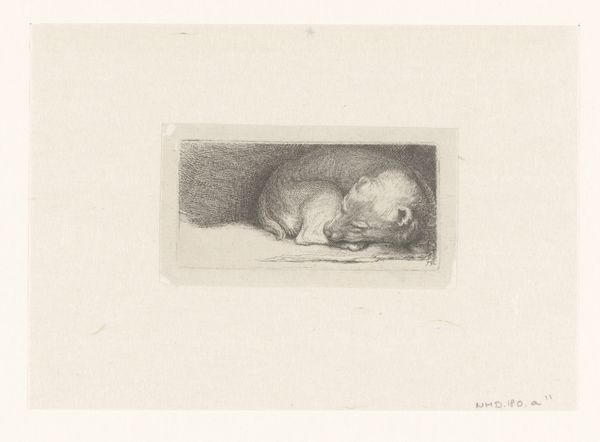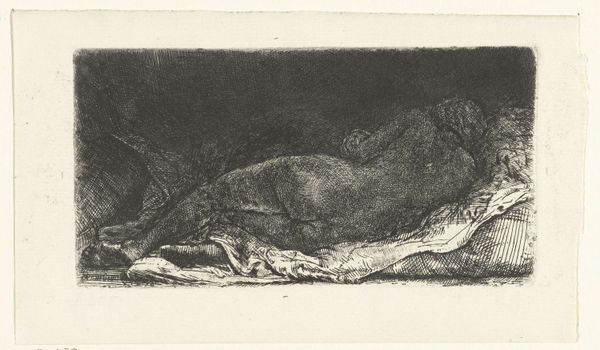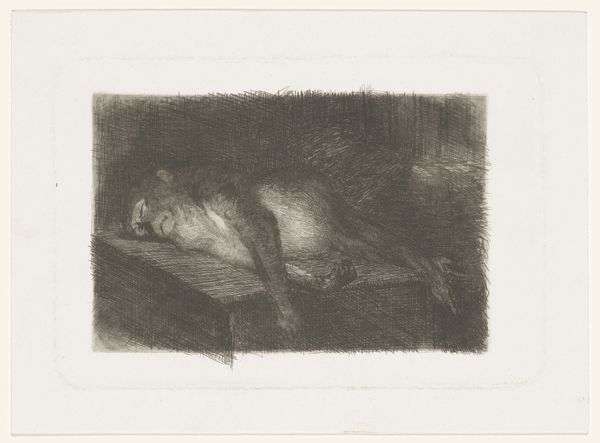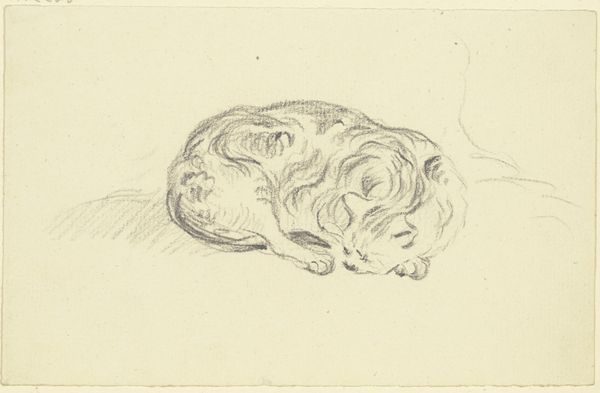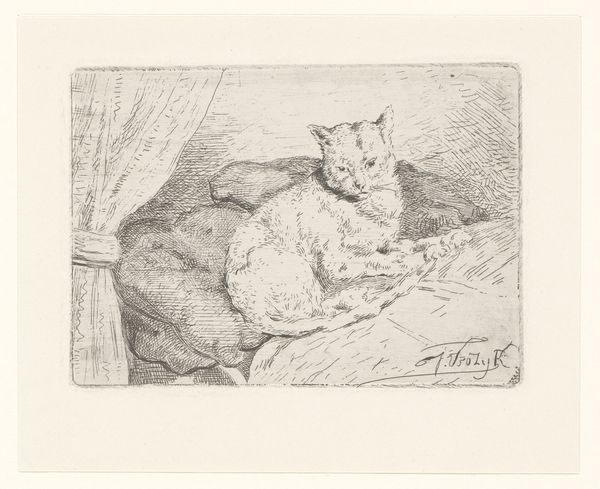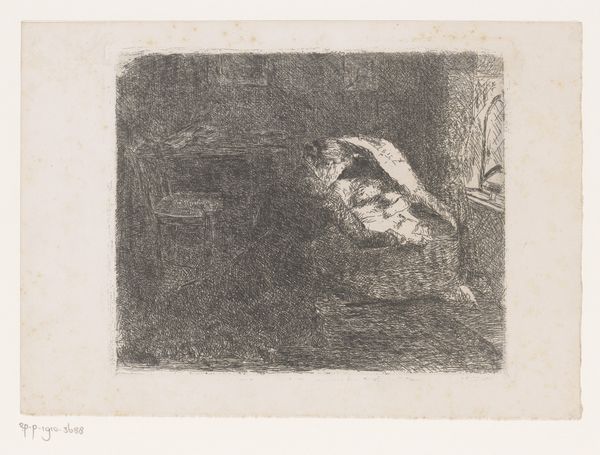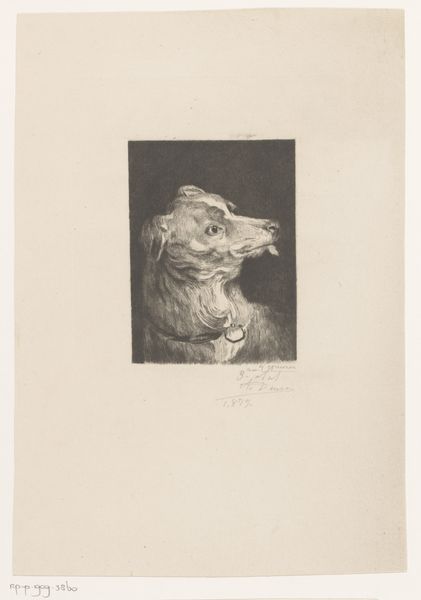
drawing, print, engraving
#
portrait
#
pencil drawn
#
drawing
#
light pencil work
# print
#
pencil sketch
#
dog
#
old engraving style
#
personal sketchbook
#
ink drawing experimentation
#
pen-ink sketch
#
ink colored
#
sketchbook drawing
#
pencil work
#
engraving
Dimensions: height 100 mm, width 156 mm
Copyright: Rijks Museum: Open Domain
Editor: So, this is "Kop van een slapende smoushond," or "Head of a Sleeping Dutch Smoushond," made before 1884, using engraving or print techniques. It's such a detailed, intimate portrait; I am wondering how the artist captured such delicate and soft textures through what appears to be such harsh material and linear technique. What are your thoughts on this print? Curator: The focus must be placed on the artist's skill in manipulating the engraving to produce such varied tonal effects. Observe how the concentration of lines creates the illusion of shadow and depth around the dog's head, in contrast to the relative lightness elsewhere. Consider too, how the white space operates – it does not merely recede but seems to advance, creating a tension within the composition. Editor: Yes, I hadn't considered the active role of the white space as negative space shaping positive! Do you think the sharp contrast emphasizes the dog’s vulnerability or maybe its inherent nobility even in slumber? Curator: Such a reading may rely too heavily on sentimental associations. It’s critical to view the technical means as inseparable from the purported subject. Could the contrast not highlight the limitations of the medium, or alternatively, its surprising versatility? The textures we perceive are artifacts of a systematic application of lines and marks, not necessarily windows onto emotional states. Editor: That is an interesting perspective, reframing texture from something sensory, to actually artificial, highlighting its construction. It sounds as if texture, contrast and light are thus signifiers of art-making and mark-making rather than inherent emotive components. Curator: Precisely. Attending to formal relations is paramount in grasping this artwork. We started off only thinking about how this medium evokes or conveys a single unified sensation like 'vulnerability,' however looking closer, the 'affect' generated by the artist's marks is diverse, distributed, even undecidable. Editor: Thank you for pointing this out. It enriches my perspective greatly. It prompts a much deeper respect for printmaking in particular and an enhanced understanding of artistic agency and vision.
Comments
No comments
Be the first to comment and join the conversation on the ultimate creative platform.
